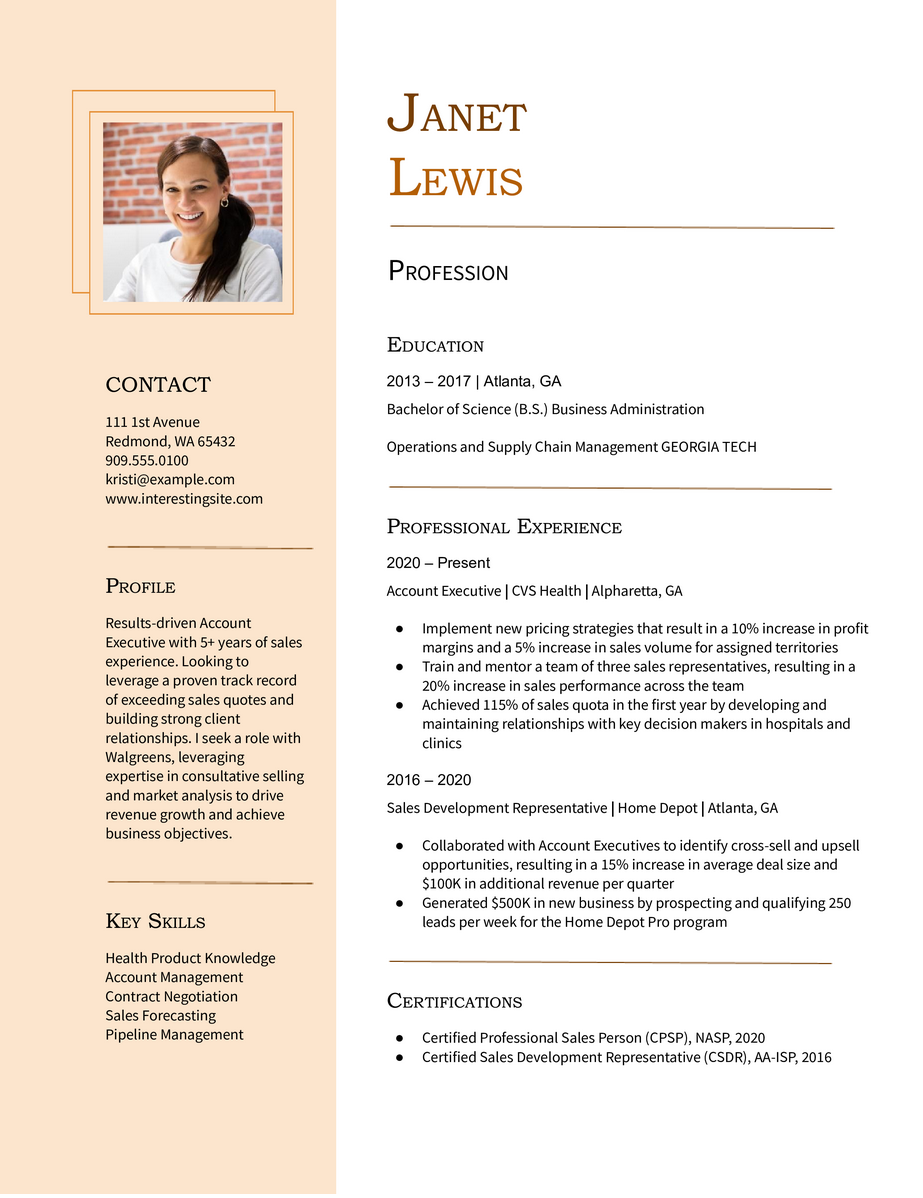To succeed during the job search, you need a suitable format for your resume that allows you to market yourself effectively to potential employers. The best resume format will vary according to your years of experience, industry, and long-term career goals. You can choose from three types of resume formats: reverse chronological, functional, and combination. Each approach has its own distinct qualities and objectives. Throughout this guide, we’ll explore each of these resume formats individually to help you decide how to structure your content for maximum impact.
What is a Reverse Chronological Resume Format?
This is the most commonly used resume format by most job seekers. It places your work history directly below the summary in reverse chronological order, enabling the hiring manager to evaluate how your career has unfolded over time. Most companies prefer this format because it prioritizes your professional experience, which is usually the determining factor in whether or not you receive an interview.
What are the benefits of a reverse chronological resume format?
The most notable benefit of a reverse chronological format is that it doesn’t waste any time getting to the heart of the resume: your career achievements. Hiring managers want to see how your contributions have left a positive mark on previous organizations. For example, mentioning project management as a skill is one thing; describing how you orchestrated a multi-million dollar construction build-out is another.
What are the cons of a reverse chronological resume format?
The only drawback to the reverse chronological format is that it isn’t always the best option for recent graduates and entry-level job seekers. For instance, say you’re looking for a position as a software developer fresh out of college. In this situation, your academic projects and skills are more likely to grab the reader’s attention over a part-time retail job.
Reverse Chronological Resume Examples
What is a Functional Resume Format?
Functional resumes omit descriptions of your work history, choosing to prioritize your professional skills instead. While this may seem like a strong choice for college graduates, in truth, recruiters essentially consider functional resume formats outdated. The issue with this format is that it doesn’t provide anything tangible for the hiring manager to assess. While it describes your skills; it doesn’t show how you’ve applied them during internships or in academic settings.
What are the benefits of a functional resume format?
The only benefit of a functional resume format is that it’s concise and easy for the hiring manager to scan. Many job seekers make the mistake of padding their resumes with unnecessary details, which certainly isn’t the case with this format. The issue is that it lacks compelling information that is likely to get you hired, even at the entry level.
What are the cons of a functional resume format?
The issue with functional resumes is that, outside of featuring your skills, the document lacks the compelling details and insights needed to stand out during the hiring process. Even if you don’t have significant work experience or internships, taking the time to describe academic projects or volunteerism is much better than only listing your skill sets.
Functional Resume Examples
What is a Combination Resume Format?
Although the combination format is considered a middle ground between reverse chronological and functional resumes, it doesn’t truly have a defined structure you can point to. What it allows you to do is reorder your sections according to your individual needs, while still providing compelling descriptions of your work history.
For example, let’s say you’re a project manager whose most impressive accomplishments came in their previous job, rather than their most recent position. A combination format would allow you to start with a career highlights section that emphasizes your largest projects, followed by a traditional professional experience section that showcases your work in reverse chronological order.
What are the benefits of a combination format?
The best aspect of the combination format is that it allows you to prioritize and structure your information based on your objectives. A candidate transitioning from the military to a career in sales might decide to lead with certifications and skills above their work history. Conversely, a former officer pursuing a role in supply chain management might benefit from keeping their military experience front and center.
What are the cons of a combination format?
The only potential drawback of using a combination format is that it might be confusing for hiring managers expecting to see a traditional structure. If you select a combination resume, be sure that you have a clear focus and strategy for why you’re deviating from a reverse chronological approach.
Combination Format Resume Examples
Frequently Asked Questions About Best Resume Formats
Although this depends on your years of experience and individual career goals, the reverse chronological format is typically the best resume format for most job seekers. Professional experience is what employers value the most when assessing candidates, and it should be featured at the forefront of your resume.
Combination resume formats can be useful alternatives to the reverse chronological format in a few situations. If you’re transitioning to a new industry and your previous jobs aren’t relevant, featuring skills and certifications below the summary could be advantageous. A combination format is also suitable for candidates who need to prioritize independent and academic projects in lieu of a robust work history.
No, it’s not recommended to use a functional resume format in today’s job market. A combination format is far more effective and still empowers you to reorder your content to ensure the most relevant information is presented first on your document.
Resume.org offers free, HR approved resume templates to help you create a professional resume in minutes. Choose from several template options and even pre-populate a resume from your profile.


